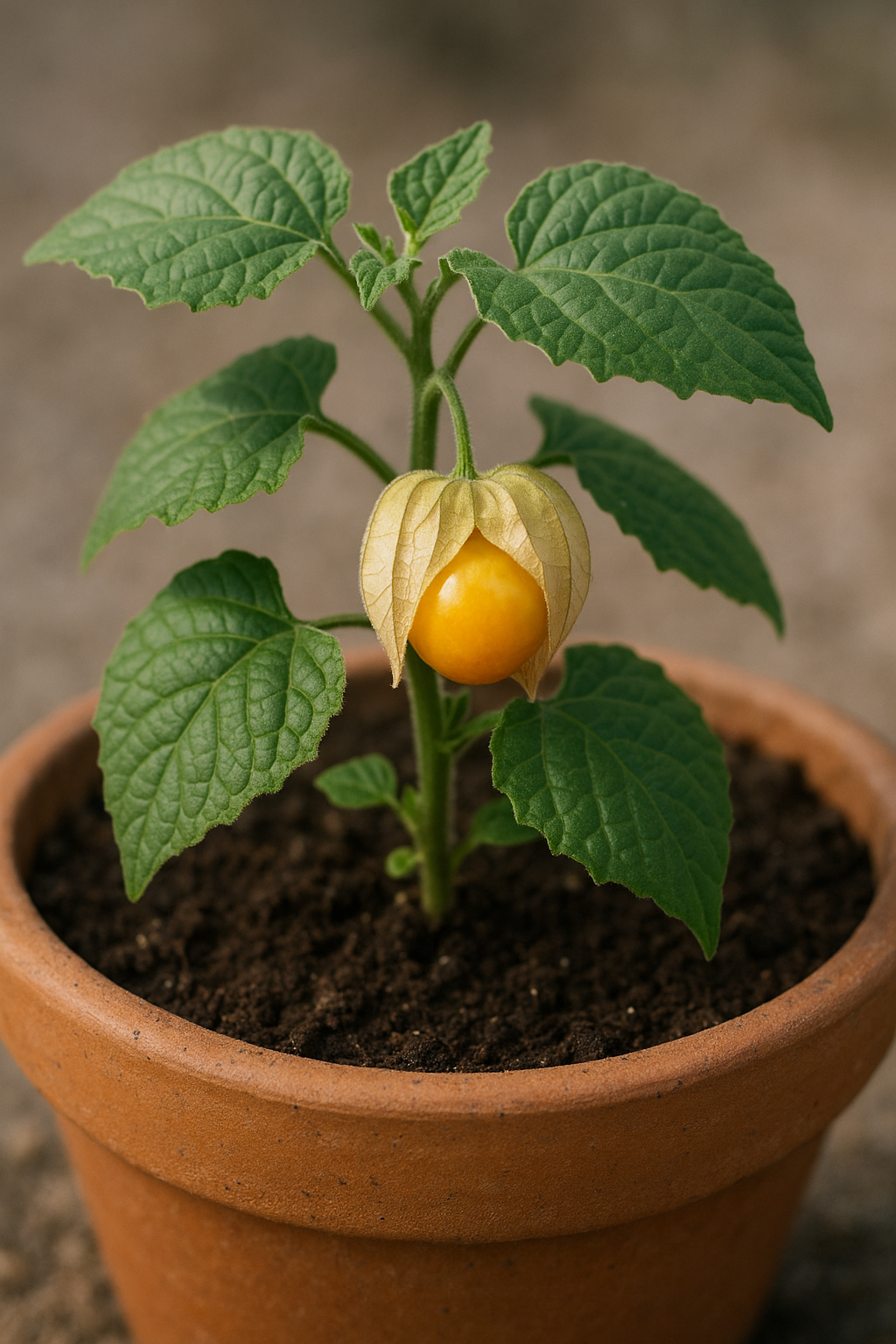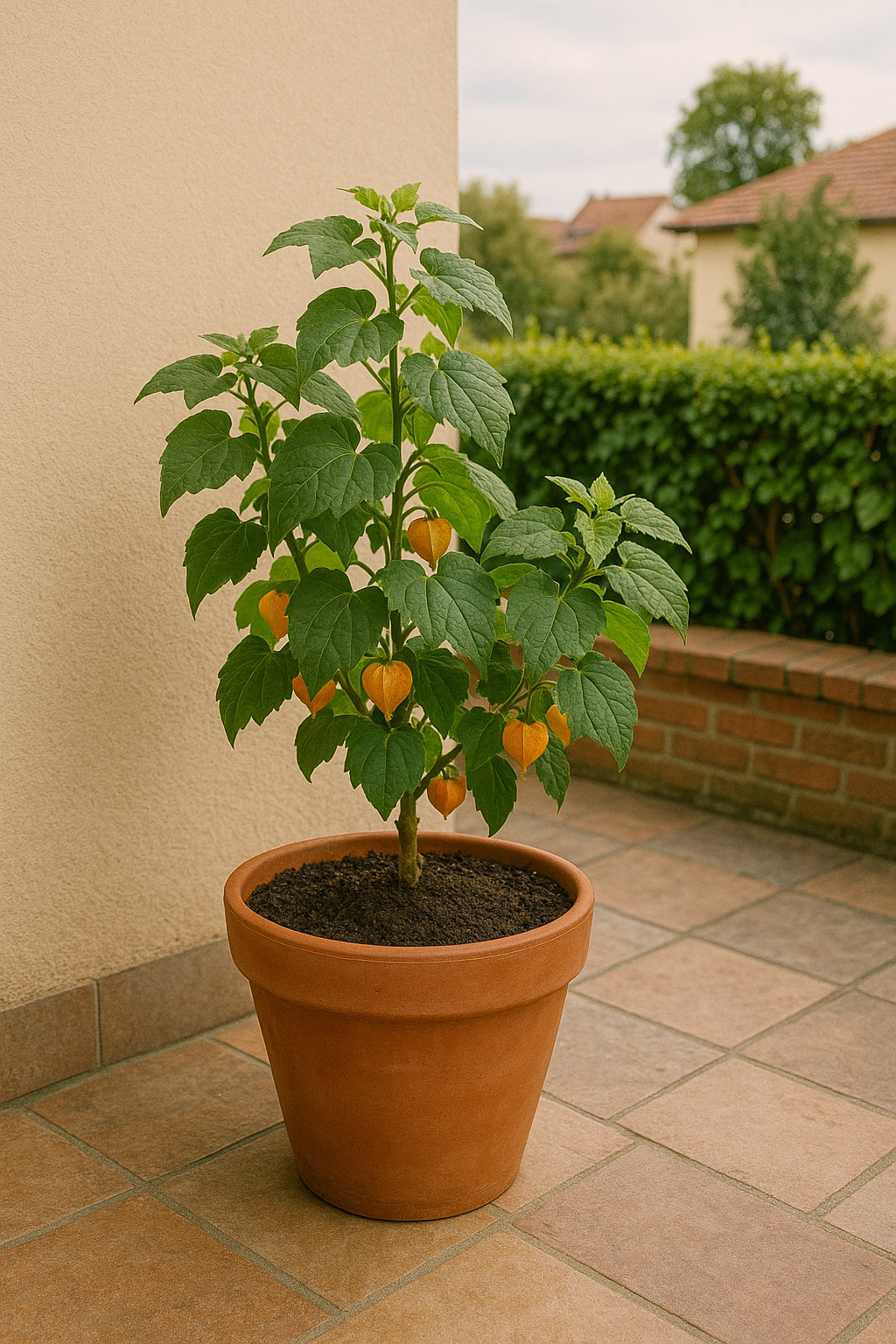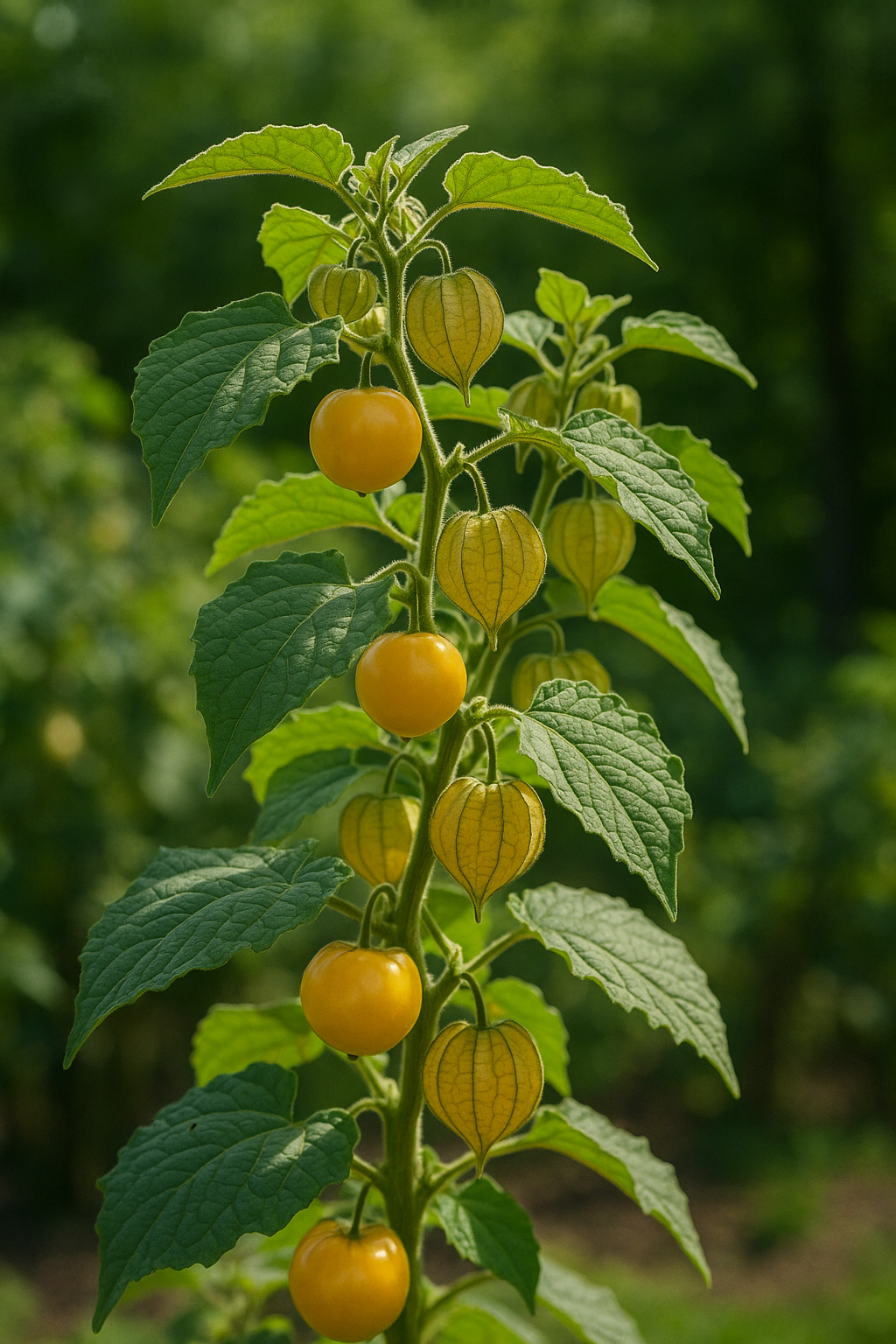Goldenberry (Cape Gooseberry)
Physalis peruviana • Solanaceae Family
Goldenberry is a unique fruit-bearing plant that produces sweet-tart berries enclosed in papery husks. Also known as Cape Gooseberry or Inca Berry, this herbaceous perennial shrub is related to tomatoes and produces hundreds of golden fruits per season.
Best Propagation Method
Seed Germination - Simple and productive!
Collect seeds from ripe goldenberries or purchase from a reliable source. Each berry contains many tiny seeds.
Clean seeds thoroughly by removing all fruit pulp. Rinse them and let dry on a paper towel for a day.
Fill small nursery pots or seed trays with light, well-draining potting mix or seed-starting mix.
Sow seeds on the surface or barely cover with a thin layer of soil - they need light to germinate properly.
Place pots in a warm location (70-80°F / 21-27°C) and keep soil consistently moist but not soggy.
Cover with clear plastic or dome to maintain humidity, checking moisture daily and misting as needed.
Place in bright, indirect light until germination occurs (can be a few days to several weeks).
Once seedlings emerge, move to stronger light (sunny window or grow light) and remove plastic covering.
When seedlings develop true leaves and are large enough to handle, transplant to individual pots.
Harden off gradually over 7-10 days before transplanting outdoors after all danger of frost has passed.
Space plants 2-3 feet apart in a sunny, well-drained location and water thoroughly after planting.
Light Requirements
Full sun is ideal for best fruiting, though plants tolerate partial shade. Choose a sunny, sheltered spot for outdoor planting.
Watering
Water regularly to keep soil slightly moist - the plant has 'a real thirst' but avoid waterlogging. Ensure good drainage to prevent root rot.
Soil Requirements
Well-draining sandy or loamy soil is ideal. Actually thrives in moderate or poor soil - overly rich soil leads to foliage at expense of fruit.
Temperature
Prefers 65-80°F (18-27°C). Not frost-hardy - temperatures at or below 30°F (-1°C) will kill the plant. Treat as annual in temperate regions.
Each healthy plant can produce 200-300+ berries per season - incredibly productive for such a small plant!
Fruits store 1-3 weeks at room temperature when left in their protective papery husks
Only eat ripe (golden-orange) berries - green unripe fruits and leaves contain solanine and can be toxic
Perfect for containers! Use at least a 5-gallon pot and provide support as plants can reach 6 feet tall
'Thrives on neglect' - too much fertilizer encourages leaves over fruit production
Self-pollinating flowers mean one plant can produce fruit, but gentle shaking helps improve fruit set
Take cuttings in fall to overwinter indoors, giving you mature plants ready for early production next season
High in vitamins A and C - can be eaten fresh, dried into 'raisins', or made into jams and chutneys
Birds love the berries! Use netting if needed, though the papery husks help disguise the fruit somewhat
Support tall plants with stakes or tomato cages - the brittle stems can break under the weight of numerous fruits



